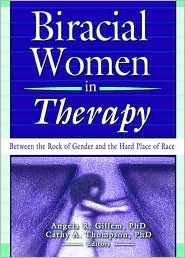Has perception of biracial women changed in modern times?Posted in Articles, Identity Development/Psychology, Media Archive, United States, Women on 2011-05-04 02:19Z by Steven |
Has perception of biracial women changed in modern times?
SMU Daily Campus
Southern Methodist University, Dallas, Texas
2011-05-03
As a biracial woman myself, I find it essential that society become better informed of the life-altering consequences that biracial individuals are forced to deal with.
While the media’s perceptions of identity shift, young women of mixed racial backgrounds are quickly becoming much less of the minority in society. America is in the midst of a demographic shift driven by a change in social views, immigration, and intermarriage. For some time in history, the question of “What Are You?” was much less complicated than it is today. Biracial women struggle with the idea of truly belonging to either race.
According to data collected by the Census in 2008 and 2009, those categorized as “mixed race” are steadily becoming one of the fastest growing demographic groups. In 2010, it has been recorded that 2.9 percent of Americans consider themselves as being two or more races. There has been a 32 percent increase in those in this category since 2000.
What is the significance of these statistics? The growing trend of biracial women feed into the growing trend of a number of other things: including the way the media defines beauty, politics, and religion.
Dr. Angela Gillem and Dr. Cathy Thompson’s Biracial Women in Therapy: Between the Rock of Gender and the Hard Place of Race, examines how physical appearance, cultural knowledge, and cultural stereotypes affect the experience of mixed-race women in belonging to, and being accepted within, their cultures…
The authors implies that people (women) who don’t fit into a defined racial category threaten the psychological and sociological foundations of the “we” and “they” mentality that determines so much of an individual’s social, economic, and political experience in the United States…
Read the entire article here.
